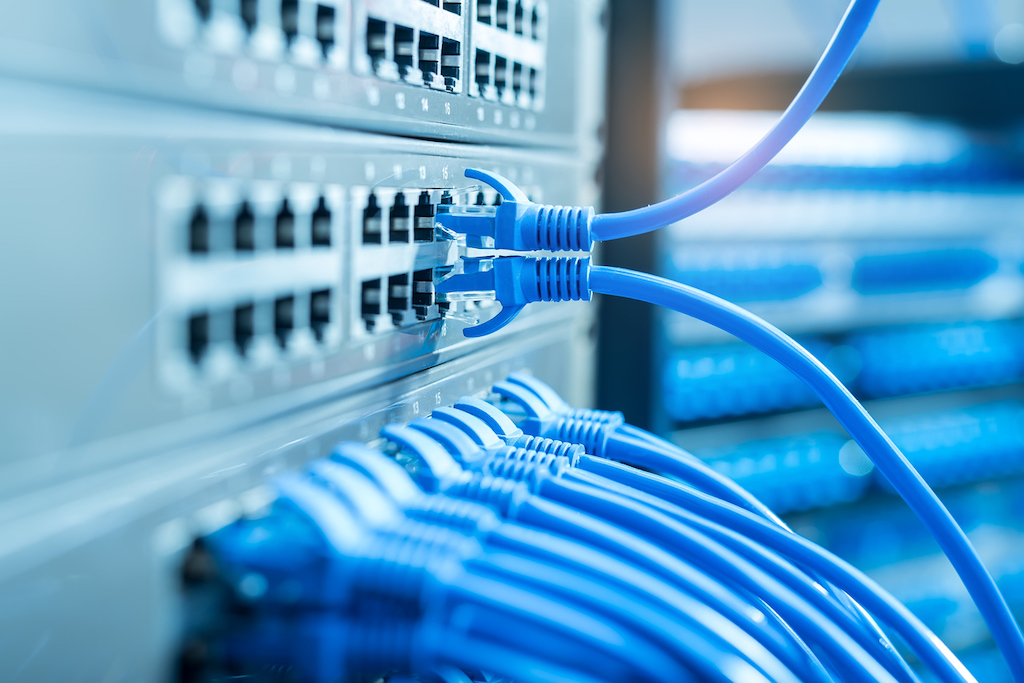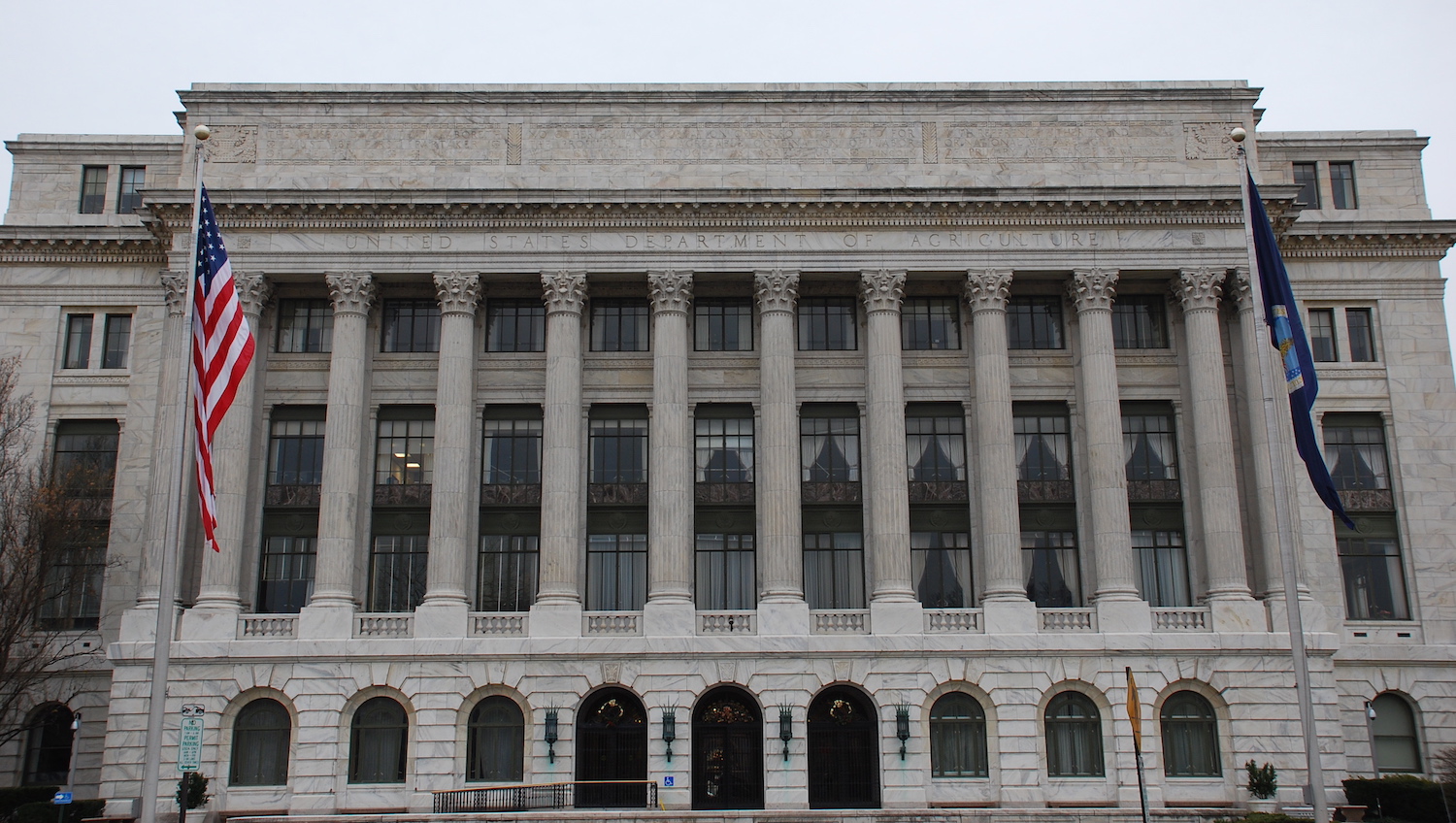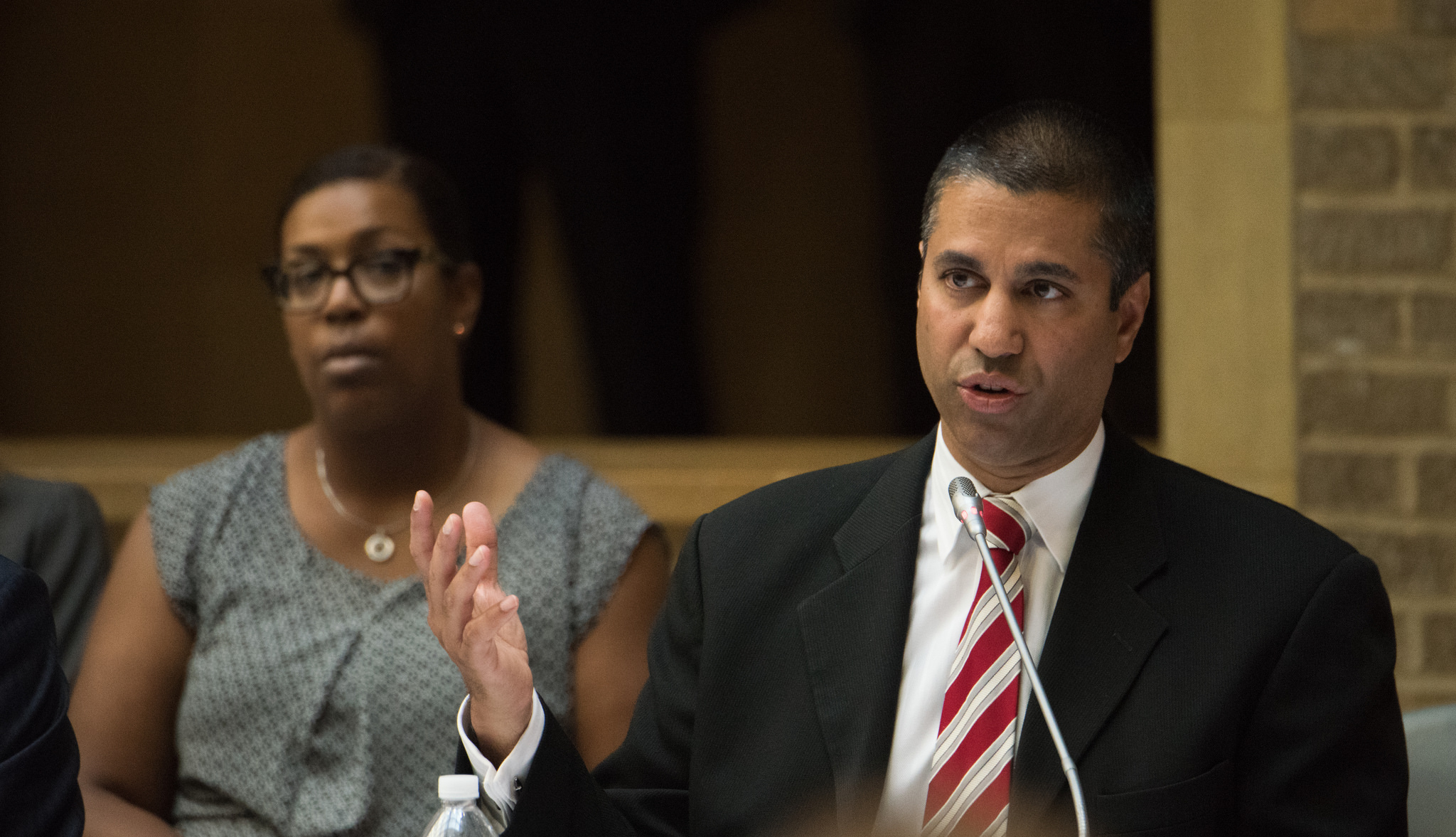
Rebecca F. Miller
President Trump on Friday unveiled a $20-billion plan to bring broadband to rural America by beefing up the way many rural residents get online—through their phones.
At an afternoon press conference at the White House, flanked by tower linemen and ranchers, the president and Federal Communications Commission (FCC) chairman Ajit Pai announced the agency’s largest-ever auction of wireless spectrum—that is, the radio frequencies over which wireless communications signals travel—for the purpose of deploying fifth-generation wireless (5G) technology.
As Mashable explains, wireless networks run on radio waves that FCC controls and opens up to private carriers through an auction process. In other words? What the announced last week will open up a huge new swath of those frequencies. China has already been pursuing similar domestic actions..
Pai also announced a Rural Digital Opportunity Fund, headed by FCC, that will award over $2 billion in subsidies every year for the next 10 years to build out that 5G network; the goal is to reach 4 million residences and businesses. Ars Technica reports the fund will subsidize companies that build out the infrastructure, like a fiber-optic backbone, needed to support wireless broadband. (Wireless needs wires.) The fund will succeed the Connect America Fund, a federal rural broadband initiative that primarily subsidized technologies like cable and DSL.
Right now, however, around 20 million Americans lack access to even that current broadband speed, which is defined at 25 Mbps (the official number, according to FCC). But the actual number of Americans without access is probably much higher. As we’ve reported, broadband availability statistics are based on self-reported data from internet service providers, and often bear little resemblance to what’s actually available on the ground.
The reasons for this situation are complex, but much of it comes down to the great expense—or inconvenience—of installing internet infrastructure. Wireline technologies—like cable, or even DSL—are generally more reliable than wireless. They don’t get knocked out during storms, and they don’t have to contend with physical obstacles like trees.
In some areas, like the rocky, hard-to-reach Appalachian Mountains, laying cable can be physically impossible. But in others, it can just be unattractive to service providers because there aren’t as many takers for the service as there would be in a city—maybe a handful of customers per mile of cable. For that reason, many rural Americans are forced to rely on cell phone coverage to get online.
In that sense, 5G could be rural America’s great hope. The infrastructure, as imagined by Chairman Pai, would be a combination of wired and wireless technologies. Funding for the program would go first toward installing hundreds of miles of fiber-optic cable as a 5G “backbone,” then toward installing small cells—antennas that are roughly the size of pizza boxes and are attached to streetlights, buildings, and other tall structures—to beam the signals to customers.
“Mr. President, we really appreciate the fact that you have put this emphasis on rural America,” said Marty Smith, president-elect of the National Cattleman’s Beef Association, who was present for the announcement. “The thing that you struck today, though, of deregulation, broadening it out, and letting the American business, letting the American farmers and ranchers fix the problems of this country, really rings hard with us.”
Rural & Agriculture Council of America vice president, Chris Skorupa, also applauded the announcement of what he described as the largest commercial spectrum auction in FCC history. In a statement, Skorupa said the $20-billion fund was the “best path forward to stimulating local economies and bridging the digital divide in rural communities across America.”
But it’s not clear if 5G will work in rural America. As Karl Bode of Motherboard explains, companies have insisted that the technology heralds a “fourth industrial revolution,” doing everything from enabling smart cities to revolutionizing rural telemedicine. But while it’s true that the millimeter wave spectrum—that is, the part of the band that hosts 5G—has the potential to offer high speeds, that part of the band also struggles with physical barriers. Like trees.
And, as tech journalists have discovered, millimeter-wave cell sites only work for 350 to 600 feet of range. That’s enough for a downtown hotspot, but not a wide, distant rural community. It could take many, many small cells to get gigabit speeds out to cropland, which means speeds will be much lower or costs will be much higher than expected.
For those reasons, FCC commissioner Jessica Rosenworcel has argued that millimeter-wave is the wrong spectrum for rural America. Instead, she said at a recent hearing, FCC should be auctioning off mid-wave bands—lower-frequency airwaves with signals that travel farther. In America, those bands are already occupied by satellite companies and the Navy, PC magazine reports.
“Our failure to do so is a problem,” Rosenworcel tweeted. “We need to do pivot to mid-band now, or risk falling behind.”










